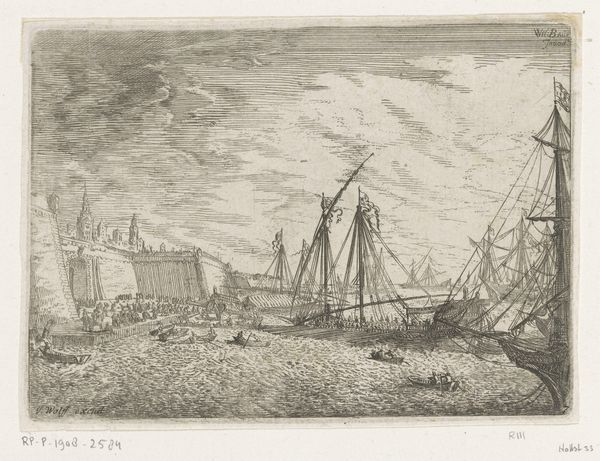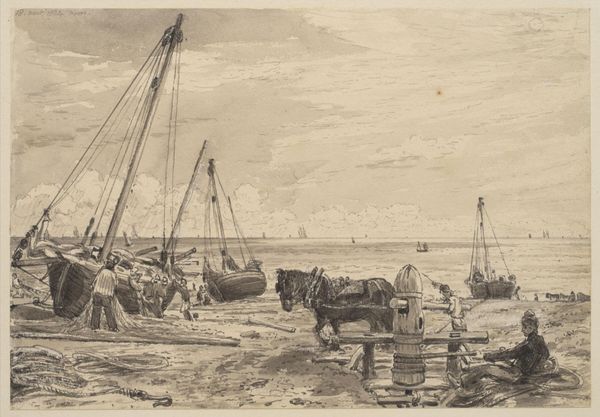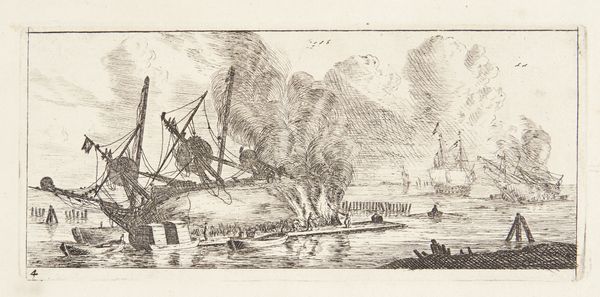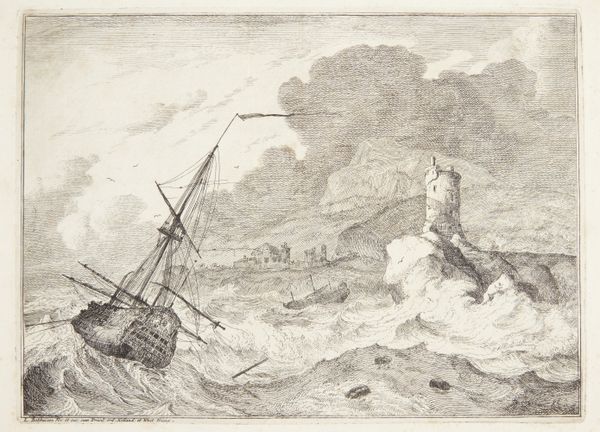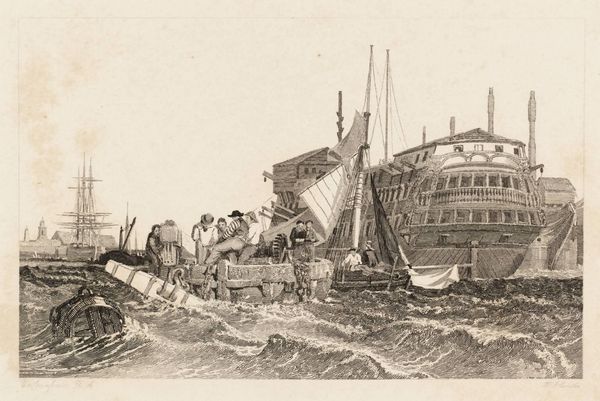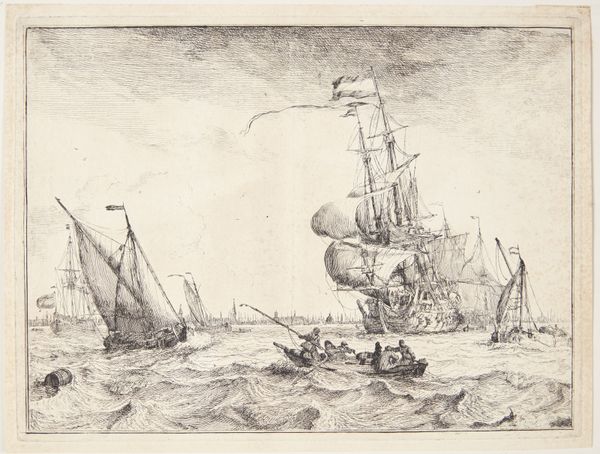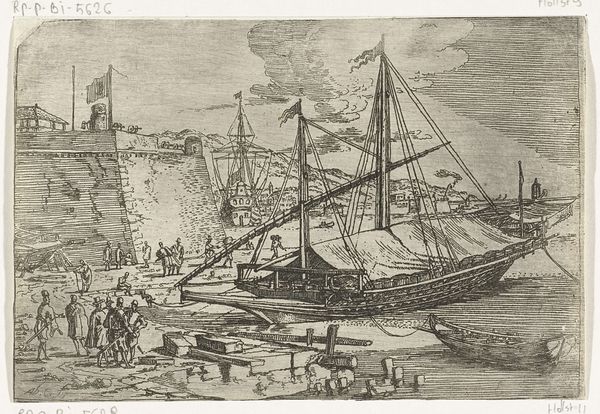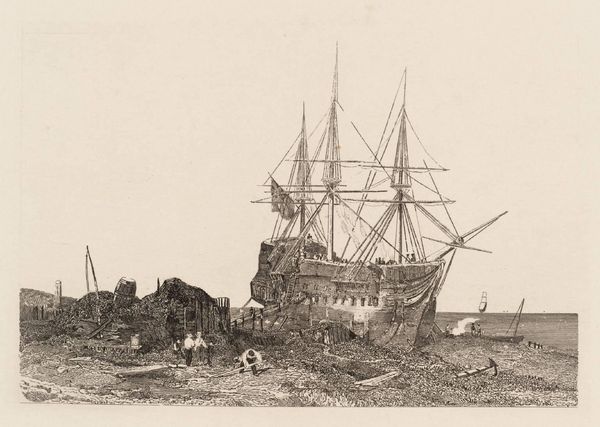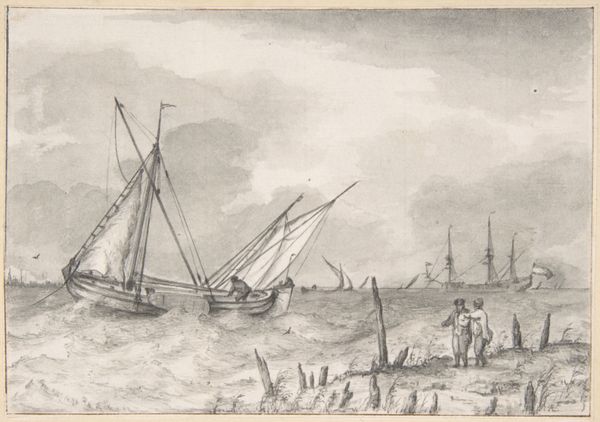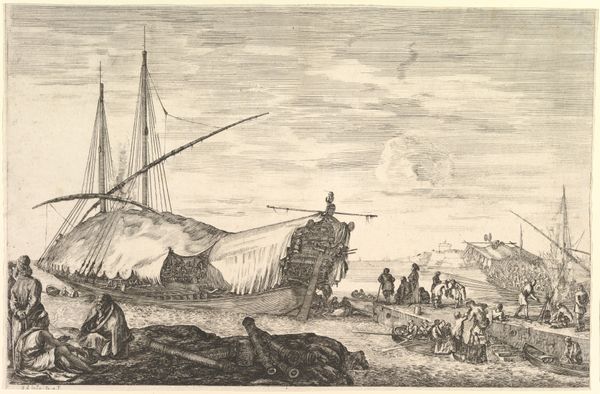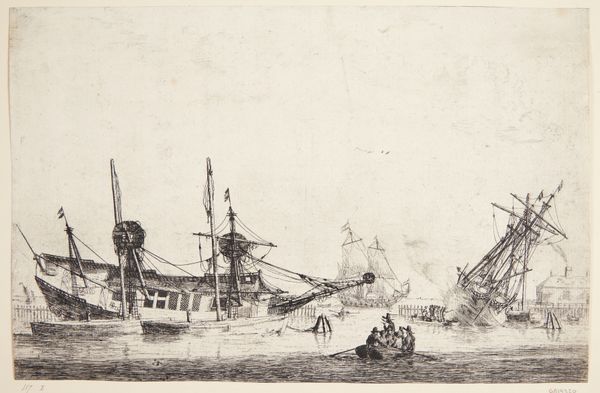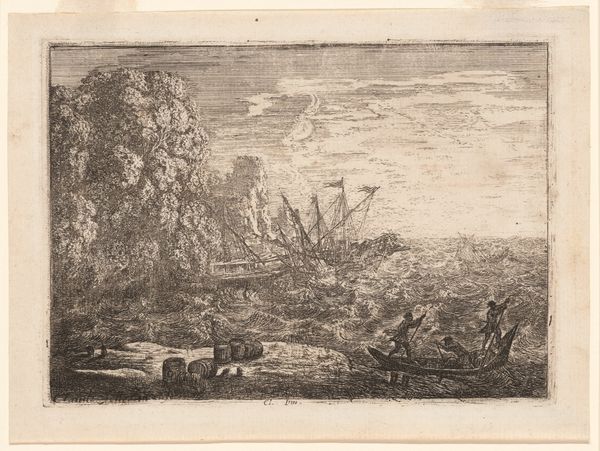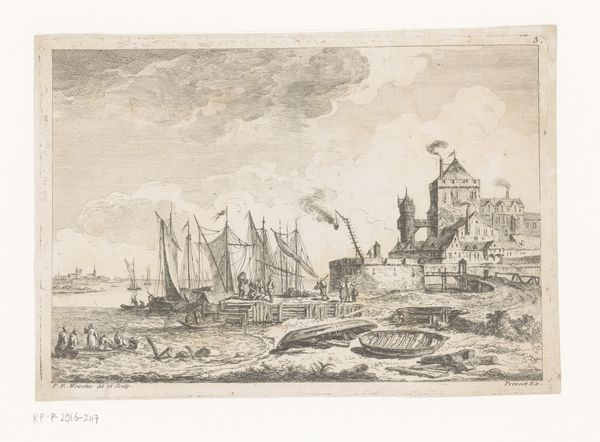
print, etching
#
dutch-golden-age
# print
#
etching
#
landscape
#
line
#
realism
Dimensions: 120 mm (height) x 210 mm (width) (plademaal)
Editor: This is "Kalfatring af et kølhalet skib," or "Caulking a Careened Ship," an etching by Reinier Nooms from 1652. It shows a large ship being repaired. I’m struck by how the artist captured all the labor involved. What do you see in this piece? Curator: I'm drawn to the representation of labor too. Note the physicality of caulking—the process of sealing seams to make the ship watertight. Nooms is clearly depicting the material realities of shipbuilding and maintenance, showcasing the hands-on, often unseen work that fueled Dutch maritime power. We should think about how this etching both aestheticizes and perhaps even idealizes this labor, right? Editor: Yes, I see what you mean. It does seem to ennoble the work, maybe even glorifies Dutch seafaring? What about the medium of printmaking itself? Curator: The choice of etching is crucial. As a readily reproducible medium, it brings images of shipbuilding to a wider audience, turning maritime labor into a spectacle for consumption. Prints democratized images, and we must think about how they are circulated and consumed within their period and by whom. Editor: So, the very act of creating and distributing this image speaks to the relationship between labor, art, and the public? Curator: Exactly! This wasn't just a pretty picture. It was a commodity, reflecting and shaping public perception of maritime industry, materials and labor. Think about the role of shipbuilding in 17th-century Dutch society. Can we connect Nooms’s focus with the vast networks of global exchange during that time? Editor: I see. So this artwork makes you consider how images of labor relate to actual work practices? Curator: Precisely. It challenges us to investigate not just what we see, but also how it was made, distributed, and understood in its own time. The line becomes blurred between high art and craft in this example. What do you take from it all? Editor: It's fascinating how this one etching can reveal so much about 17th-century Dutch culture and its relationship with the sea and maritime work! Thanks!
Comments
No comments
Be the first to comment and join the conversation on the ultimate creative platform.
